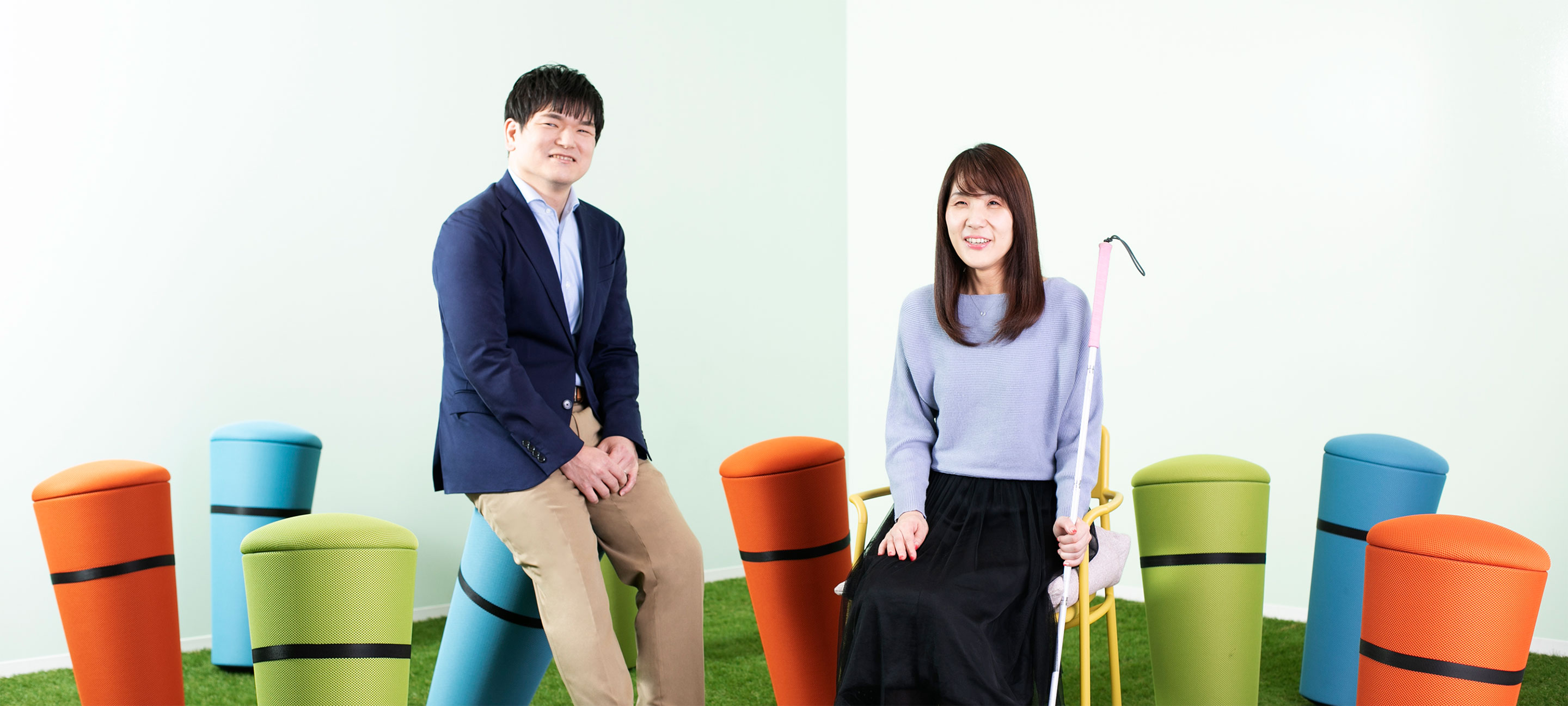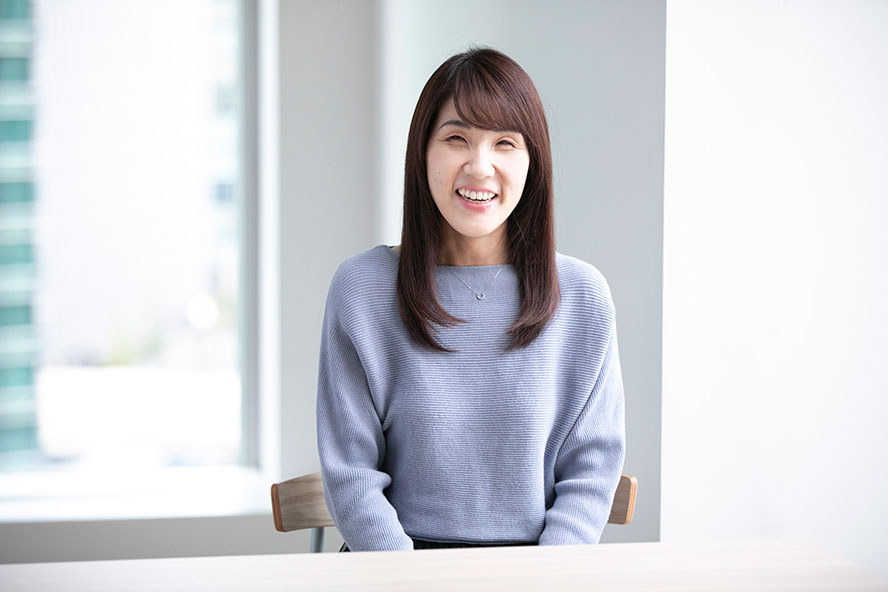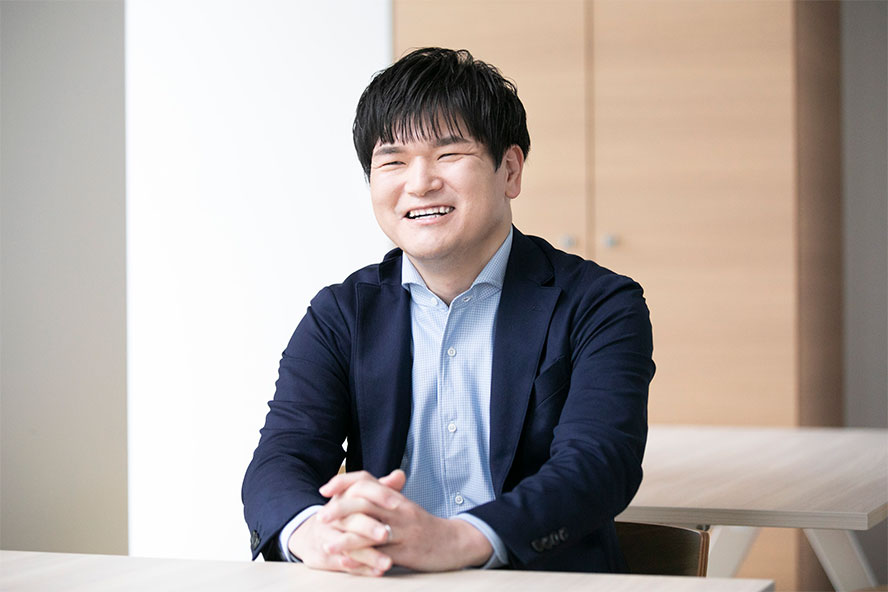- Home
- ABOUT US
- Shiseido Talks
- Using Our Individual Strengths to Thrive with the “Expanding Work Opportunities for Visually Impaired Persons” Project
Using Our Individual Strengths to Thrive with the “Expanding Work Opportunities for Visually Impaired Persons” Project
~Embodying Diversity and Inclusivity to Create Opportunities for Everyone to Flourish~
February 15, 2023

Since its foundation, Shiseido has believed that creating an environment where diverse values are respected and individual abilities are allowed to shine their brightest is essential to the company’s growth. Diversity is the source of Shiseido’s value creation, and the “Expanding Work Opportunities for Visually Impaired Persons (EWO for VIPs)” Project, now in its third year, embodies this philosophy. We interviewed Sayuri Ishikawa, the project’s founder who is herself visually impaired, and Naohiro Kurogo, the project’s systems developer, on what “EWO for VIPs” is about and what their goals for the future are.
Turning visual impairment to a strength: A new form of correspondence marketing
―What led you to starting the EWO for VIPs Project?
Ishikawa: This goes back to why I decided to work for Shiseido. I am visually impaired, as are my parents. Like the majority of visually impaired people, my parents worked in the massage, acupuncture, and moxibustion industries, and they always told me that I should challenge myself to try broader fields and not just follow in their footsteps.
They believed the number of fields people like us can work in will continue to grow in the coming future thanks to technological advancements and the normalization of disabilities in society—and it’s this that formed the backbone of my ideology.

Sayuri Ishikawa, Project Founder
I’ve had many experiences in which my visual disabilities have prevented me from doing things that come easily to others, and I’ve of course felt uneasy at times. However, when I was a student, I had the chance to encounter Shiseido’s ideas about diversity and inclusion, and it was then I learned that Shiseido provides a work environment which enables everyone to support one other and flourish, regardless of whether or not they are disabled. Moreover, I found out people with visual impairments actually work at Shiseido, too.
I’ve always been moved by Shiseido’s efforts to actively include visually impaired people, such as their program “Shiseido Listeners’ Café,” which provides beauty information to those who are visually impaired. I believed Shiseido would be a company where I could utilize my strengths, and that led me to working here.
―What has been your career path since joining Shiseido?
Although there are hurdles in making such possibilities into a reality, I have come to believe that overcoming these obstacles will led to the creation of new job categories in which visually impaired people can thrive.

Ishikawa presenting EWO for VIPs
at 2020’s Beauty Innovation Contest
It was around this time that I found out about Shiseido’s “Beauty Innovations Contest,” which is an internal competition where each office presents new, innovative ideas that can help Shiseido achieve its corporate mission. I realized this was my chance, and I proposed EWO for VIPs. Thanks to the support from people around me, I was selected as the representative for Japan in the contest and won second place on the global stage. This success became the catalyst for EWO for VIPs’ full-scale initiation in 2020.
In EWO for VIPs, we’re aiming to first transform jobs within Shiseido that are thought to be impossible for people who can’t see into jobs that are. Then, we want to convey to society that there are a variety of jobs which can be performed regardless of disabilities.
The first step in achieving these goals was to establish systems and structures that allow visually impaired people to work in the realm of correspondence marketing.
―What is “correspondence marketing”?
―What kinds of issues did you encounter when starting the project’s work itself?
However, much of the existing marketing software is not designed to be compatible with text-to-speech, and it would be difficult to overhaul these systems from scratch.
So, in order to explore optimal methods from the angles of technology, usability, and cost, we poured a lot of time into working with Mr. Kurogo in system development to see if there were aspects of jobs that could be done without the use of text-to-speech software.
After various preparations were made, the first visually impaired staff member for correspondence marketing was hired in August 2021, marking the project’s inauguration. This staff member has worked in this job over a year now and is performing wonderfully as well as meeting sales targets.
At present, we have completed hiring for the second year of the project and are in the process of fine tuning our systems while also verifying that the work processes we established are running smoothly in practice.
Finally, we are also considering presenting our trial case outside the company and sharing the successes we’ve had from the systems we built in-house.
The power of system development in expanding work opportunities
―I imagine a lot of time and effort went into making text-to-speech possible for such an enormous amount of product information.
I believe we were able to succeed precisely because we had team members with different backgrounds and perspectives working together towards a common goal.
Kurogo: When the project began, Ms. Ishikawa consulted me about whether it would be possible to make the tools they use in marketing systems compatible with text-to-speech software. However, depending on the tool’s function, some needed text-to-speech software while others did not.
For this reason, we started by figuring out which systems and screens are used by salespeople and modified those rather than going after the system as a whole. With that said, it’s highly difficult for us systems developers to precisely understand the work of telecommunicating salesperson, and it takes more than just a day or two of working together to gain a deep understanding of all the operations involved.
So, Ms. Ishikawa’s involvement in handling work as a correspondence marketing representative played a major role. She made lists of all her work duties, including what tools are required, what screens they use, etc. And because she was the one spearheading this project, we were able to efficiently identify and organize which systems’ aspects needed to be modified. She was truly a formidable driving force that wedged open a door that had been tightly shut.

Naohiro Kurogo, member in charge of
system development in the project
―Have you noticed any changes in your own awareness thanks to your involvement in the project?
I realized that, in the end, what matters is a person’s individual strengths, regardless of whether or not they have disabilities. I now believe IT systems can help create environments where people can make the most of their individual abilities.
I also believe the fact that Shiseido colleagues embrace diversity and inclusion ensures that everyone can use their individual strengths to their fullest extent, regardless of if the person is visually impaired.
Eliminating stereotypes about what it means to be visually impaired
―Finally, I would like to ask about your future endeavors.
Every project has its hurdles, and shifting people’s mindsets from “It’s impossible,” to “How do we make it possible?” then implementing said changes is a particularly tall order. But this project is making this happen, and I would like more people at Shiseido to know about it.
Related links
Shiseido Listeners’ Café: Beauty information for visually impaired people (Japanese only)
ABOUT US
- Who we are
- History
- Profile
- Governance
- Quality Management
- Supply Network
- Region/Business
BRANDS
- Prestige
- Premium
- Inner Beauty
- Life Quality Makeup
SUSTAINABILITY
- Strategy / Management
- Society
- Environment
- Governance
- Reports / Data
- Related Information
INNOVATION
- Research and Development
- Research Areas
- Research outcomes
- Product safety
- Product Development Policy
- Initiatives for doctors and researchers
CAREERS
INVESTORS
- IR Library